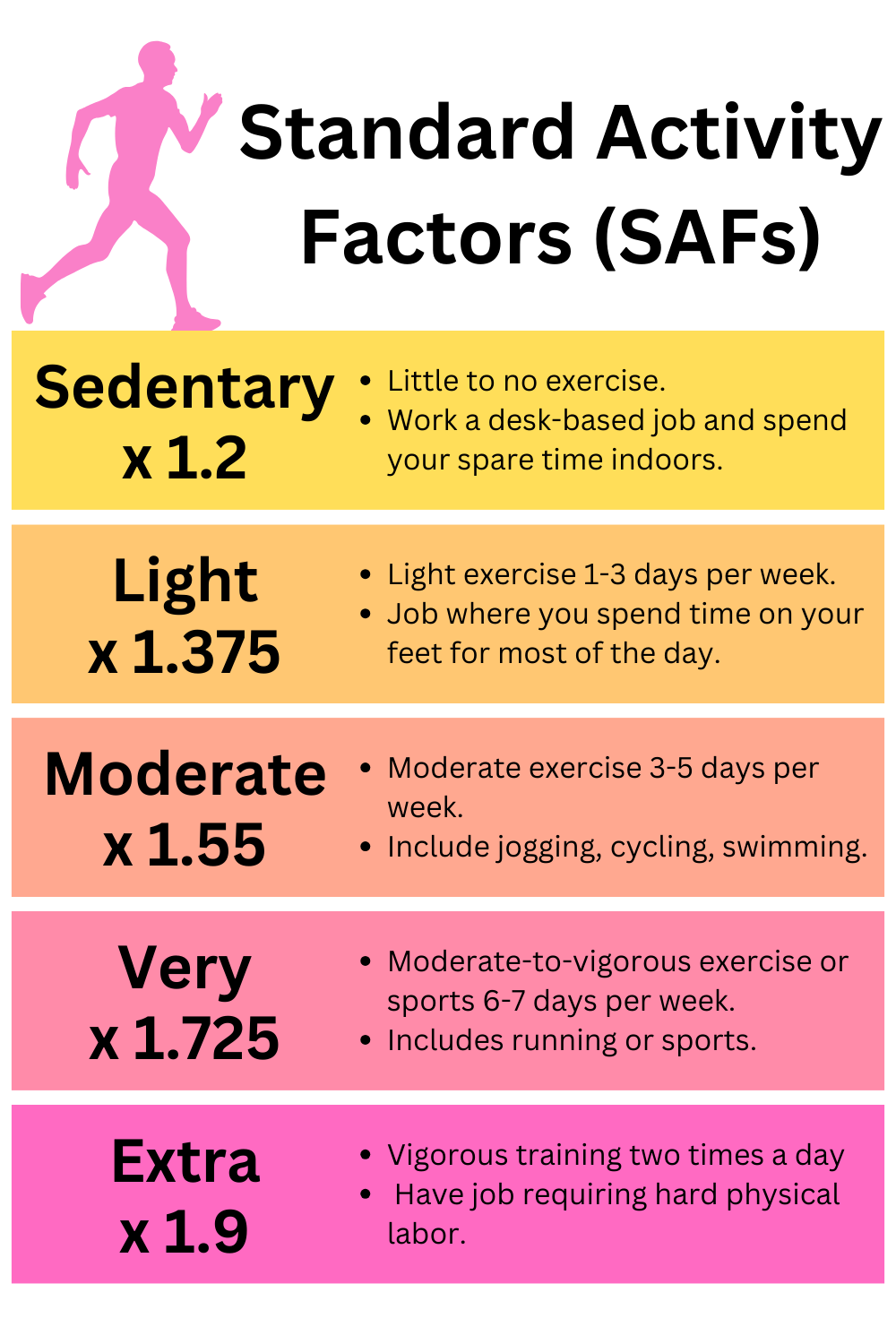Links marked with * — Partner products have been carefully selected by Gym Geek. When you purchase a product through one of these links, we may earn an affiliate commission. As an Amazon Associate we earn from qualifying purchases.
![]()
Most Popular Calculators
Calculators to try next:
If you’ve tried to lose weight before, you’ll know how difficult it is to battle cravings and maintain motivation. After 6-8 weeks, you might hit a plateau or find it impossible to keep to your daily calorie goal.
When your body gets used to a consistent calorie intake, your metabolism can slow down. This is a process called adaptive thermogenesis and it makes it more difficult to sustain weight loss over a long period of time.
In an attempt to overcome adaptation, some people follow alternative methods of calorie deficit, increasing and decreasing calorie intake over a period of days, weeks or months.
One popular method is the zig zag diet, where you alternate between high calorie and low calorie days each week.
Zig zag dieting
In a zig zag diet, you alternative between high calorie and low calorie days each week. Followers of this diet believe it prevents the body from adapting to a fixed calorie intake. In theory, this leads to more sustainable weight loss over a long period of time.
Varying your calorie intake throughout the week can also make your weight loss plan more flexible. For example, if you want to eat more at weekends or on social occasions, you can shift your deficit to specific days in the week without compromising your weight loss goal.
There’s no specific zig zag diet, but most people will eat close to their maintenance calories on their “high” days, with the “low” days adjusted to maintain the deficit across the entire week. The high calorie days created by Gym Geek’s calculator will be up to 875 calories more than low calorie days, although this may be reduced based on your current weight or your weight loss goal.
Diet and metabolism
Our bodies are complex machines that evolved over millions of years to adapt to the changing environment.
When food is scarce, the human body naturally adapts by slowing down its metabolism. In times where food wasn’t so abundant, this mechanism kept our ancestors alive through famines and droughts. It’s for the same reason you can lose muscle mass on large deficits – because muscle is more metabolically active than fat.
It may seem logical, then, that following a calorie deficit would cause your metabolism to slow down. However, this is not entirely accurate or helpful. Our bodies are much more complex than simple math equations.
It is true that if you restrict your calorie intake for an extended period of time, your body responds by conserving energy. This is called adaptive thermogenesis or metabolic adaptation.
To avoid this adaptation, it’s usually recommended to lose weight slowly over time, following a moderate calorie deficit. That means losing no more than 1 lb (or 0.5 kg) per week.
It’s also wise to take frequent extended breaks from dieting, for example by eating at maintenance calories for 2-4 weeks after 8 weeks of deficit.
Are there metabolic benefits to zig zag diets?
Because a zig zag diet sees you eat close to your maintenance calories 2-3 days per week, some people believe it’s able to “trick” the body away from survival mode.
The idea is that alternating between high and low calorie days keeps your body guessing and prevents it adapting to a set calorie intake.
If this is true, using a zig zag diet may be more effective than following a daily calorie deficit.
Although many dieters swear by the zig zag diet, there’s not strong evidence supporting it as an effective weight loss strategy compared to a typical calorie deficit.
The main driver of any weight loss strategy is CICO (calories in, calories out). As long as you follow the diet with an overall (moderate) calorie deficit compared to your TDEE, you will lose weight over time.
So the choice to follow a zig zag diet is one of personal preference.
Calories In, Calories Out (CICO)
Calories in, calories out (CICO) is they key concept behind any weight loss or weight gain strategy. The idea is that any weight loss or gain is determined by the balance between calories eaten (calories in) against how many calories you burn (calories out).
Calories out, more accurately called Total Daily Energy Expenditure (TDEE), is the number of calories your body needs to maintain its current weight.
TDEE depends on a number of factors, including your age, gender, current weight and height. It also depends on your activity level.
To lose weight, you will maintain a calorie deficit relative to your TDEE. This usually means eating fewer calories, but increasing your activity level also counts!
Daily vs weekly deficits
Most standard calorie calculators show your daily TDEE along with a calorie deficit goal to achieve a set rate of weight loss. This is usually between 0.5 lb and 2 lb per week.
For sustainable weight loss, you should aim to lose weight slowly over an extended period of time. This means selecting a moderate goal of 0.5 lb to 1 lb per week.
But while some people like to eat the same number of calories every day, it’s not necessary. As long as you are maintaining a deficit over a period of time, you will lose weight.
That’s why the zig zag diet first calculates your calorie goal over the entire week. For example, if your daily goal was 2,000 calories, the zig zag calculator will aim to achieve 14,000 calories per week.
Because of CICO, the outcomes of both diets should be exactly the same, because you’re eating the same deficit.
Dividing your calories into days
Once you have your weekly calorie goal, the zig zag diet divides your calories unequally into low calorie days and high calorie days.
There’s no specific zig zag diet, so there’s a lot of flexibility in how many high calorie days you have. You’re also free to choose how many more calories to eat on the high days.
The high calorie days created by Gym Geek’s calculator will be up to 875 calories more than low calorie days, although this may be reduced based on your current weight or your weight loss goal.
How to use the zig zag calorie calculator
Before you start, you’ll need a recent weight measurement. We use your current weight to calculate your total daily energy expenditure (TDEE). This is also known as your maintenance calories.
You can provide your weight in kilograms, pounds or stone and pounds.
Enter your details
Input the information about your weight, height, gender, age and activity level into the calculator. This will be used to calculate your TDEE. By default, the calculator assumes you are maintaining your current weight. But you can enter a weight loss goal or weight gain goal of up to 1 kg (2.2 lb) per week.
Using your TDEE along with your weight goal, the zig zag calorie calculator will output a weekly total calorie consumption estimate. This includes a calorie deficit or a calorie surplus. See our calorie calculator guide for more information on how this calculation works.
Which activity level should I choose?
Our zig zag calculator estimates your TDEE based on your current weight and activity level. The activity levels are called Harris-Benedict Standard Activity Factor (SAF) scores, and they range from 1.2 (+20%) to 1.9 (+90%), depending on your level of physical activity.
To estimate your TDEE, you will need to determine which SAF score fits your lifestyle best:
- Sedentary (SAF = 1.2) – Your daily life involves little to no exercise. You may work a desk-based job and spend your spare time indoors with little physical activity.
- Light Activity (SAF = 1.375) – You take part in light exercise or sports 1-3 days per week. If you work in a job where you spend time on your feet for most of the day, this may be an appropriate factor.
- Moderate Activity (SAF = 1.55) – You take part in moderate exercise or sports 3-5 days per week. This can include activities like jogging, cycling or swimming for at least 30 minutes each day.
- Very Active (SAF = 1.725) – You take part in moderate-to-vigorous exercise or sports 6-7 days per week. This can include running or playing competitive sports.
- Extra Active (SAF = 1.9) – You take part in vigorous training two times a day or have job requiring hard physical labor.

Adjusting your zig zag diet
By default, our zig zag calculator shows calorie intakes for Monday through Sunday. Saturday and Sunday are high calorie days, while Monday to Friday are the low calorie days. This is the most popular eating pattern if you wish to eat more at the weekends.
You can easily adjust the high and low days by clicking the toggle next to each day of the week. We recommend keeping 2-3 high calorie days and 4-5 low calorie days.
Minimum calories
The calculator will not allow any day to fall below 1,200 calories for women and 1,500 calories per day for men. A diet that consumes fewer than this is not safe for most people.
If any result falls below these amounts, the calculator automatically reduces the high calorie days to keep every day above the minimum. If you have a low body weight or select an aggressive calorie deficit, the calculator will show every day as the minimum and it will not provide a zig zag output.
References
Rosenbaum, M., & Leibel, R. L. (2010). Adaptive thermogenesis in humans. International journal of obesity, 34(1), S47-S55.
Patterson, R. E., & Sears, D. D. (2017). Metabolic effects of intermittent fasting. Annual review of nutrition, 37(1), 371-393.

